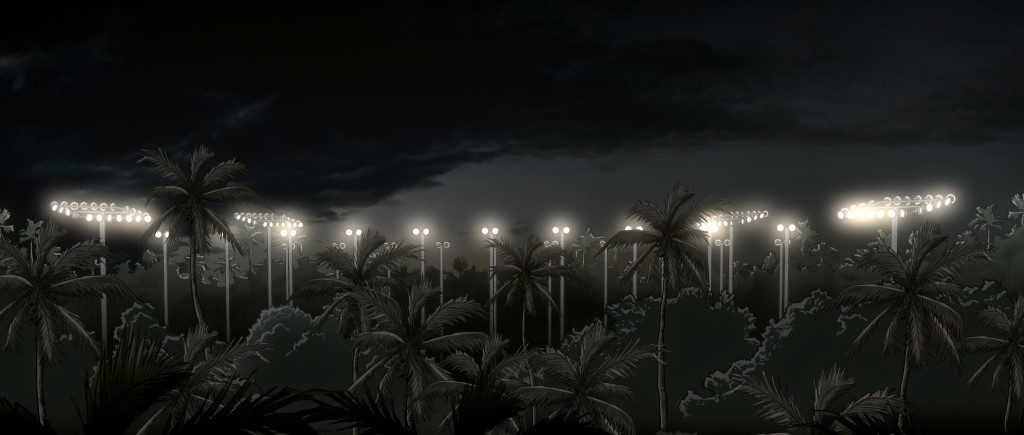
We spent some hours on Survival Day re-recording a vocal on our new album, ‘The Last Waterhole’, which we just got back from a mastering studio in Melbourne.
Recording in a studio has its advantages – you can go back and re-do as little or as much of it as you want (or can afford). As Brian Wilson (Smile), Guns n’ Roses (Chinese Democracy), Metallica, Portishead and others can attest, this process can last for many years.
No such luck when it comes to voting in a State or Federal election. You get one go at it, pretty much, and then live with your mistake for the next three or four years. And boy do we make some mistakes! It seems more than half of the 750,000 Australians who voted informally in the 2010 Federal election did so by leaving the ballot paper blank or by numbering only one box. Others put crosses or ticks instead of numbers. Some even wrote their own name on the ballot paper. About 127,000 people wrote rude things, substituted other names or otherwise defaced their ballot paper. (Somewhere in my lizard brain lurks a hazy memory of someone much younger than me, with long hair and a beard, writing “vote Wazza” on his ballot paper).
Melbourne University professor Sally Young says blank votes are difficult to interpret.
“Are they are expression of apathy, a rejection of the choices on offer, or acquiescence to the political status quo? Or do they signify confusion, frustration and even resignation at an inability to mark the ballot in the required manner?”
Political reporter Lauren Wilson of The Australian called it “the Latham effect” – referring to former Labor leader Mark Latham’s plea to voters on 60 Minutes to vote informally. As it turned out, the percentage of informal votes was above 5% in all the seats the Coalition wrested from the government.
The informal vote was dramatically lower in the 2012 Queensland election – just 2.15%, arguably because the system is easier to understand and there is no upper house to confuse people. But 53,797 lost votes is a lot if the result turns out to be tight.
Whatever you thought of the March 24, 2012 Queensland election result, tight it was not. The Labor Party suffered its biggest defeat since Federation.
From 51 seats in 2009, Labor was reduced to just seven seats. “They could all go to work in a Tarago,” went the joke that did the rounds for some weeks.
Despite the electoral rout, the four minor parties and independents took 24.22% of the primary vote (579,231 votes). Keep that number in mind while I make the case for urging people to not only vote in tomorrow’s State election, but to get it right.
The Australian Electoral Commission says more than 3 million Australians did not vote in the 2010 Federal election. Of those, 1.5 million were not enrolled, leaving 900,000 who were enrolled but did not vote and, as we already observed, 750,000 who voted informally.
That one in five Australians eligible to vote did not do so amounted to a “democratic deficit,” said Associate Professor Joo-cheong Tham. An expert in Australian electoral law at the University of Melbourne Law School, Tham told the ABC many young voters are not engaged or interested in the electoral process.
“It (not voting), is concentrated among the young. We are talking about people coming into the political process, reaching adulthood who are for one reason or another disengaged from politics.
“There should be much more public concern about that.”
Lucas Walsh and Rosalyn Black wrote about this in The Conversation after the 2013 Federal election http://theconversation.com/finding-the-missing-youth-vote-16958. Young people aged 18-24 comprise about 30% of the electorate, but are “not oriented in any persistent ideological direction”. Many also remain un-enrolled. Just think what a political party could do if they could somehow harness the voting power of 493,113 young people?
Did you know voting is compulsory in 10 countries (including Australia) that make an effort to prosecute people who don’t vote? Voting is compulsory in another 12 countries, but they don’t usually go to much bother to find out who didn’t vote or why.
According to the New Zealand Electoral Commission, Australia (91%), tops the list of OECD countries for voting rates in their most recent elections, way ahead of the US, Canada and the UK (all in the low 60s).
Europe wakes up
Despite Greece’s low score in terms of percentages of people who turn out to vote, the leftist Syriza Party was swept into power on Sunday. To be more accurate, their opponents were swept out, by Greeks finally fed up with five years of austerity. This result was achieved in a system where typically some 60% of eligible voters turn out. Strange things are happening quickly in European politics.
Parties that did not exist even two years ago are posing a serious threat to the incumbents. These parties range from right-wing anti-immigration parties who are finding plenty of support, to far left parties, also gaining traction from people fed up with austerity measures and high unemployment. Coalitions of the left and right are emerging and more could follow, in Spain in particular.
It is hard to see an Australian political party which can break the traditional Labor vs Tory nexus. But there’s always the Greens. Greens Senator Scott Ludlam (pictured), was in Maleny last Sunday to support local candidate David Knobel, a well-spoken young man with an impeccably groomed Ned Kelly beard. A small, but enthusiastic and committed crowd welcomed the Senator, whose presence, they joked, chased the rain, fog and low cloud away from the Glasshouse Mountains.
The Greens originated from the United Tasmania Group, the first “green” party anywhere in the world, which first ran candidates in the 1972 election. In 1992, the various State Greens parties launched the Australian Greens. In 2015, the Australian Greens hold the balance of power in the federal House of Representatives, the federal Senate, the Tasmanian Legislative Assembly and the ACT Legislative Assembly.
The Greens don’t have a seat in Queensland and they are unlikely to win our seat of Glasshouse, given they polled 15.64% of the votes in 2012. Local member Andrew Powell, now the State Environment Minister, polled 55.5%. So don’t expect young Knobel to roll the incumbent, although he did remind us to be outraged about the State Government’s new law that restricts objections to mining proposals to immediate neighbours.
So here’s a quick guide: how to vote in Queensland, which has an optional preferential voting system. In this State you can put No 1 in one box, ignore the other candidates and your vote still counts.
So: first make sure you’re on the roll, then, take the letter from the Queensland Electoral Commission (QEC) that you should have received or photo ID with you to the polling booth. If you don’t have either, don’t be deterred. You can still make a declaration that you are eligible to vote. Take your ballot paper and read the instructions. Then put the number ‘one’ in one box only, OR, number your voting preferences any way you desire, by marking some or all of the squares. (The QEC calls these options ‘single preference’, ‘partial’ or ‘full distribution of preferences’ respectively).Give your last number to the party you least want to win – or don’t mark their square at all. Pop it in the box.
Don’t steal the pencil.

















